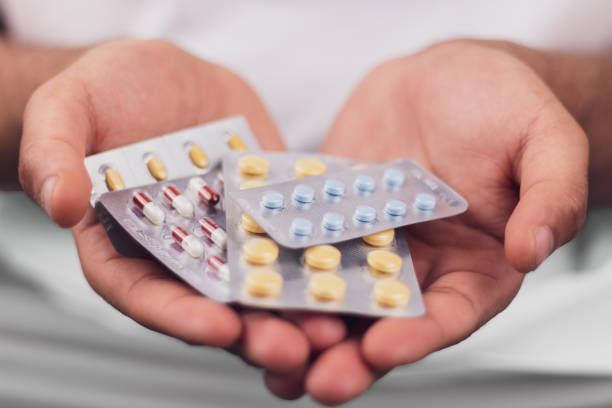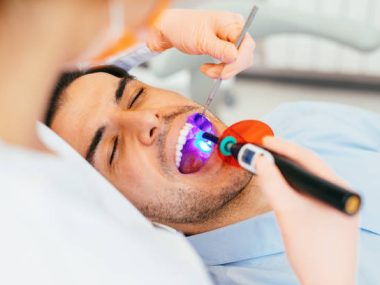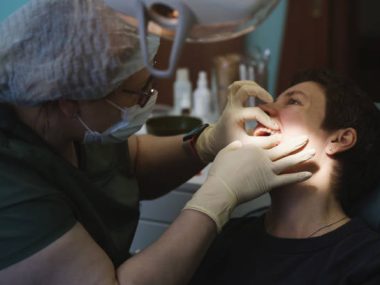How much are antibiotics without insurance? The cost of healthcare in the United States has long been a topic of concern and debate.
For those without health insurance, the financial burden of medical expenses can be particularly daunting, especially when it comes to essential medications like antibiotics.
Antibiotics play a critical role in treating bacterial infections, safeguarding public health, and preventing the spread of diseases.
However, many individuals find themselves facing a common question: “How much are antibiotics without insurance?”
Understanding the pricing and accessibility of antibiotics in the absence of insurance is crucial for individuals seeking affordable healthcare solutions.
In this comprehensive guide, we will delve into the factors that influence the cost of antibiotics, explore strategies to minimize expenses and provide insights into the evolving landscape of antibiotic pricing in the United States.
Whether you’re currently uninsured, exploring options, or simply curious about healthcare costs, this resource will shed light on the complexities of antibiotic pricing and how to navigate them.
Also Read:
What Is Underwriting in Insurance?
How Many Life Insurance Policies Can I Have?
How Much Are Antibiotics without Insurance?
The cost of antibiotics without insurance can vary significantly depending on several factors, making it essential for individuals to be aware of potential expenses when seeking necessary treatment.
Without insurance coverage, patients typically bear the full financial burden of prescription medications, including antibiotics, which can impact their accessibility and affordability.
The price of antibiotics is influenced by various elements, such as the specific antibiotic prescribed, its formulation (generic or brand-name), dosage, and the pharmacy or healthcare provider from which it is obtained.
In general, generic antibiotics tend to be more cost-effective than their brand-name counterparts, offering a potential source of savings for uninsured individuals.
On average, a course of generic antibiotics can range from $10 to $50 or more, depending on the medication’s type and quantity.
For more specialized or brand-name antibiotics, the cost can escalate significantly, sometimes exceeding $100 for a single prescription.
Additionally, consultation fees with healthcare providers can further contribute to the overall expense.
To alleviate the financial strain of antibiotics without insurance, patients can explore various cost-saving strategies, such as seeking out prescription assistance programs, utilizing coupons, comparing prices at different pharmacies, or considering online pharmacies that may offer more competitive pricing.
Navigating the landscape of antibiotic costs without insurance can be challenging, but with informed decision-making and proactive research, individuals can better manage their healthcare expenses while still receiving the vital treatment they need.
Factors Affecting Antibiotic Costs
Several factors contribute to the varying costs of antibiotics, making it essential to understand the intricacies that influence their pricing:
- Type of Antibiotic: The specific antibiotic prescribed plays a significant role in determining its cost. Generic antibiotics tend to be more affordable than brand-name counterparts, as they do not carry the additional expenses of research, development, and marketing.
- Dosage and Duration: The prescribed dosage and the duration of antibiotic treatment impact costs. Longer courses and higher doses naturally result in higher expenses.
- Antibiotic Formulation: Antibiotics come in various forms, such as pills, capsules, liquids, or injections. Different formulations may have different price points, affecting overall costs.
- Healthcare Provider: The choice of healthcare provider or clinic can influence antibiotic costs, as fees for consultations or appointments can add to the overall expense.
- Pharmacy Pricing: The pharmacy where the prescription is filled can have varying pricing for the same antibiotic. Shopping around or using discount programs can help find lower prices.
- Insurance Coverage: For individuals with insurance, the type and extent of coverage can significantly reduce out-of-pocket expenses. However, those without insurance often face the full cost of antibiotics.
- Geographic Location: Antibiotic prices can differ based on the region and location of the pharmacy. Urban areas might have higher prices due to increased operating costs.
- Supply and Demand: Market dynamics, including supply and demand for specific antibiotics, can impact pricing. Shortages of certain antibiotics may result in price spikes.
Understanding these factors can empower patients to make informed decisions about their antibiotic treatments, explore cost-saving options, and advocate for affordable healthcare solutions.
Tips for Negotiating Antibiotic Prices
Negotiating antibiotic prices can help individuals, especially those without insurance or with high deductibles, manage healthcare costs more effectively.
Here are some valuable tips for negotiating antibiotic prices:
- Comparison Shopping: Research and compare prices for your prescribed antibiotic at different pharmacies. Prices can vary significantly, so calling around or using online tools can help you find the best deal.
- Ask for Generic Versions: Inquire if a generic version of your antibiotic is available. Generics are typically more affordable than brand-name medications but are equally effective.
- Prescription Discount Programs: Many pharmacies offer prescription discount programs or loyalty cards. Enroll in these programs to access discounts on your antibiotics.
- Discuss with Your Healthcare Provider: Have an open conversation with your doctor or healthcare provider about the cost of antibiotics. They may be able to recommend more cost-effective alternatives or provide samples.
- Request Coupons or Discounts: Ask the pharmacist if there are any manufacturer coupons or discounts available for your antibiotic. Some pharmaceutical companies offer assistance programs.
- Bulk Purchase: If your treatment requires an extended course of antibiotics, inquire about purchasing a larger supply at once. This can sometimes lead to cost savings.
- Online Pharmacies: Consider reputable online pharmacies that may offer competitive prices. Ensure they are licensed and require a valid prescription.
- Patient Assistance Programs: Investigate whether you qualify for patient assistance programs offered by pharmaceutical companies or non-profit organizations. These programs can provide free or reduced-cost antibiotics to eligible individuals.
- Negotiate with Cash Payment: In some cases, paying in cash rather than using insurance can result in a lower price. Discuss this option with your pharmacist.
- Be Persistent and Polite: Don’t hesitate to negotiate politely with the pharmacist or pharmacy manager. They may be willing to work with you to find a more affordable solution.
Remember that proactive communication and research are key when negotiating antibiotic prices.
By exploring these options, you can potentially lower the cost of your antibiotics and make healthcare more affordable.
Also Read:
How Do Insurance Companies Make Money?
How Much Does a Dental Bridge Cost without Insurance?
Conclusion
Understanding the cost of antibiotics without insurance is crucial for individuals navigating the complexities of healthcare expenses.
Antibiotic prices can vary significantly based on factors like medication type, dosage, and pharmacy choice.
While the absence of insurance can present financial challenges, there are strategies to mitigate costs, such as opting for generic versions, utilizing discounts, or exploring patient assistance programs.
As healthcare continues to evolve, being informed and proactive about antibiotic pricing empowers individuals to access necessary treatments without compromising their financial well-being.
Ultimately, by making informed decisions and exploring cost-saving options, individuals can effectively manage the expense of antibiotics, ensuring they receive vital medical care when needed.






